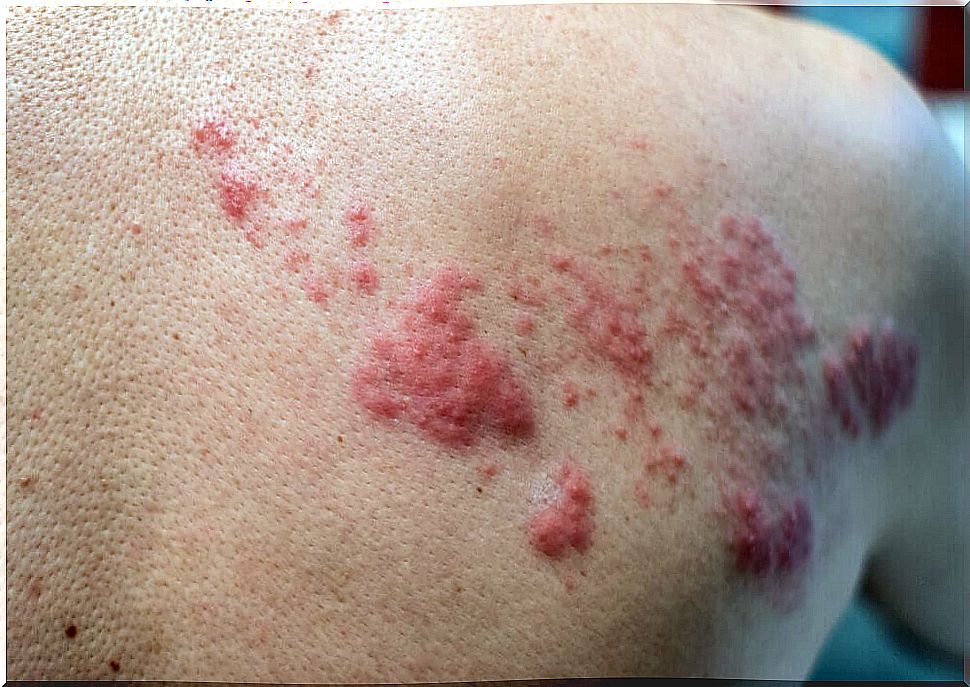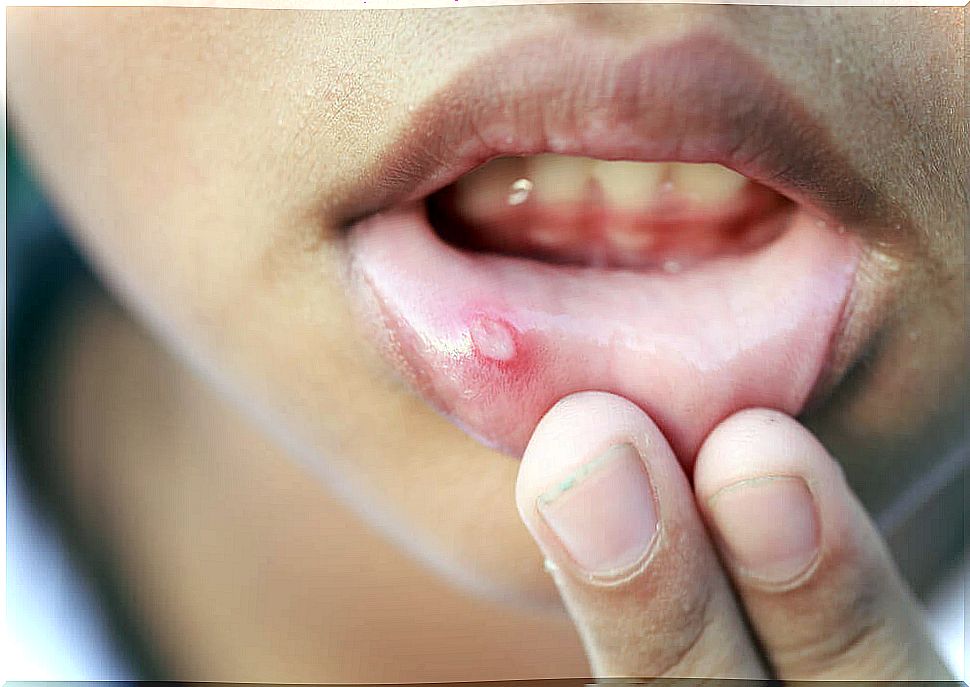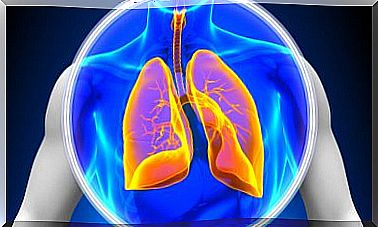Behcet’s Disease: What Does It Consist Of?
Behcet’s disease is a chronic condition that is difficult to diagnose, characterized by multiple episodes of vasculitis in any part of the body. This causes diverse clinical manifestations; especially mucocutaneous ulcers, joint pain, and neuropsychiatric disorders.
If you want to know a little more about this rare condition, we invite you to read the following article. Here we will address the causes, symptoms, and available treatment options.
Causes of Behcet’s disease
The origin of the disease is unknown, although it is thought to be a combination of autoimmune, genetic, and environmental mechanisms. In fact, many of the mucocutaneous lesions of this syndrome are related to infections with the herpes simplex virus and various species of Streptococcus .
These phenomena cause chronic and recurrent inflammation of the blood vessels. It can occur almost anywhere in the body, so the most direct consequence is the disorder in the irrigation of the tissues. This explains the appearance of ulcers.
There are many other primary and secondary causes of vasculitis capable of producing similar symptoms. Some examples are granulomatous vasculitis, Takayasu arteritis, and giant cell vasculitis.

Risk factor’s
The chances of suffering from the disease increase in the following conditions:
- Age between 20 and 30 years: although it can also affect the elderly and children, at these ages the diagnosis is usually made.
- Being from Asia: Both the Middle East and East Asia are regions with much higher incidence of Behcet’s disease. The causes that explain this phenomenon are still not very well understood.
- Male gender : not only does the frequency increase in this group, but the symptoms tend to be more severe.
- Alterations in certain genes: patients with this disease abnormally express the HLA-B51 and HLA-B5 genes.
Most common symptoms of Behcet’s disease
The inflammation of the blood vessels leads to problems in the irrigation of the tissues. Therefore, in Behcet’s disease the symptoms can be as varied as the affected organs are varied. We will summarize the main associated signs below.
Mucocutaneous
The oral mucosa is usually affected by the appearance of aphthous ulcers, which are excavated and deep lesions, well defined, whitish in color and very painful, especially during chewing.
Nodules, which are raised, indurated lesions of varying size, may occur on the skin anywhere on the skin surface. They can be deep and, when they present inflammatory signs (pain, redness and increase of volume), they are called erythema nodosum .
Eyepieces
Inflammatory phenomena, in any of the ocular structures, are common. The most representative is uveitis, which is inflammation of the uvea, the name by which three of the most vascularized structures of the eye are grouped. Blurred vision, eye pain, and red eye syndrome are the common clinical manifestations.
Retinal vasculitis can also occur, a condition in which the vessels that supply blood to the retina become inflamed. Affected patients may have transient blind spots (scotomas) or see fly-like objects in flight (myodesopsia).
Neuropsychiatric
Some cases can be diagnosed after aseptic meningitis. This disease is characterized by neurological symptoms, such as a stiff neck, seizures, and altered state of consciousness.
It can also be produced in rheumatoid arthritis, systemic lupus erythematosus, and sarcoidosis. Due to the importance of these manifestations, the term neuro-Behcet has been created , estimating an incidence of between 5 and 30% of these patients, according to a review article.
Dementia and personality changes can arise as a consequence of the vascular alterations typical of the disease.
Other signs
Many patients develop joint symptoms that can lead the doctor to think about a possible case of rheumatoid arthritis. Also frequently diarrhea, abdominal pain colic type, malaise and multiple arterial or venous thrombosis.
Possible complications
Affected patients have a greater tendency to generate arterial aneurysms. These are pathological dilations of the vessels that, when they reach a certain size, can rupture and cause internal bleeding. If you don’t act quickly, hemorrhagic shock is a direct cause of death.
According to a scientific study, the following complications tend to increase mortality in patients with Behcet’s disease:
- Sepsis: infection by Pseudomonas aeruginosa and Candida albicans produce an exaggerated response of the organism, can lead to multiple organ failure.
- Ischemic heart disease: inflammation of the myocardial vessels increases the incidence of fatal cardiovascular events.
- Budd-Chiari syndrome: This disease is characterized by thrombosis of the suprahepatic veins.
Diagnosis of Behcet’s disease
The combination of clinical and paraclinical elements allows physicians to make the diagnosis. The most important aspect is the presence of recurrent mouth or genital ulcers, together with various ocular and dermatological lesions.
In turn, some of the following blood tests could be requested, although none of them makes the diagnosis by itself:
- Complete blood count, especially white blood cell count.
- C-reactive protein (CRP).
- Erythrocyte sedimentation rate (ESR).
- Total and fractionated proteins.
Treatment options
Behcet’s disease has no cure. Medical management of it consists of preventing complications and treating clinical manifestations as soon as possible. This can be done with topical or systemic drugs.

Topical therapy
The application of creams, mouthwashes and eye drops can reduce the symptoms of the disease, however, they are not a cure for it.
Within this group, corticosteroids stand out, anti-inflammatory drugs that are also used in other conditions. In fact, some of them occur naturally in the human body.
Systemic therapy
This includes the use of drugs orally or intravenously, depending on the clinical context. The drugs used are very varied and the final decision is based on the manifestations that are being presented, according to a scientific review study.
For example, in cases of arthritis, a non-steroidal anti-inflammatory drug, such as ibuprofen, and colchicine for refractory cases could be useful. Medications such as dapsone and thalidomide are used to control skin manifestations. On the other hand, cyclophosphamide, glucocorticoids and azathioprine are effective for ocular disorders.
Behcet’s disease and its complicated diagnosis
As the clinical manifestations are so varied, the diagnosis of this syndrome is usually late. In case of presenting some of the alterations mentioned in this article, it is advisable to go to a trusted health professional. Initially, the specialist may be a family doctor, who will then refer to rheumatologists, immunologists or dermatologists.









